I haven’t been able to come up with a witty starting line for this initial Today in Papal History: Live from Rome entry, so we’ll just get right to it…
—
After dropping off luggage at my lodgings for the next 9 days (the Casa il Rosario in the oldest part of Rome), I met up with one of my oldest friends and official/unofficial tour guide, Fr. Ned Scheidecker from the Diocese of Helena, and off we went.
We walked by the ruins of the Roman Forum and made our way to the Basilica di Santa Maria in Ara coeli (St. Mary of the Altar of Heaven) – my first taste of an old Roman church.
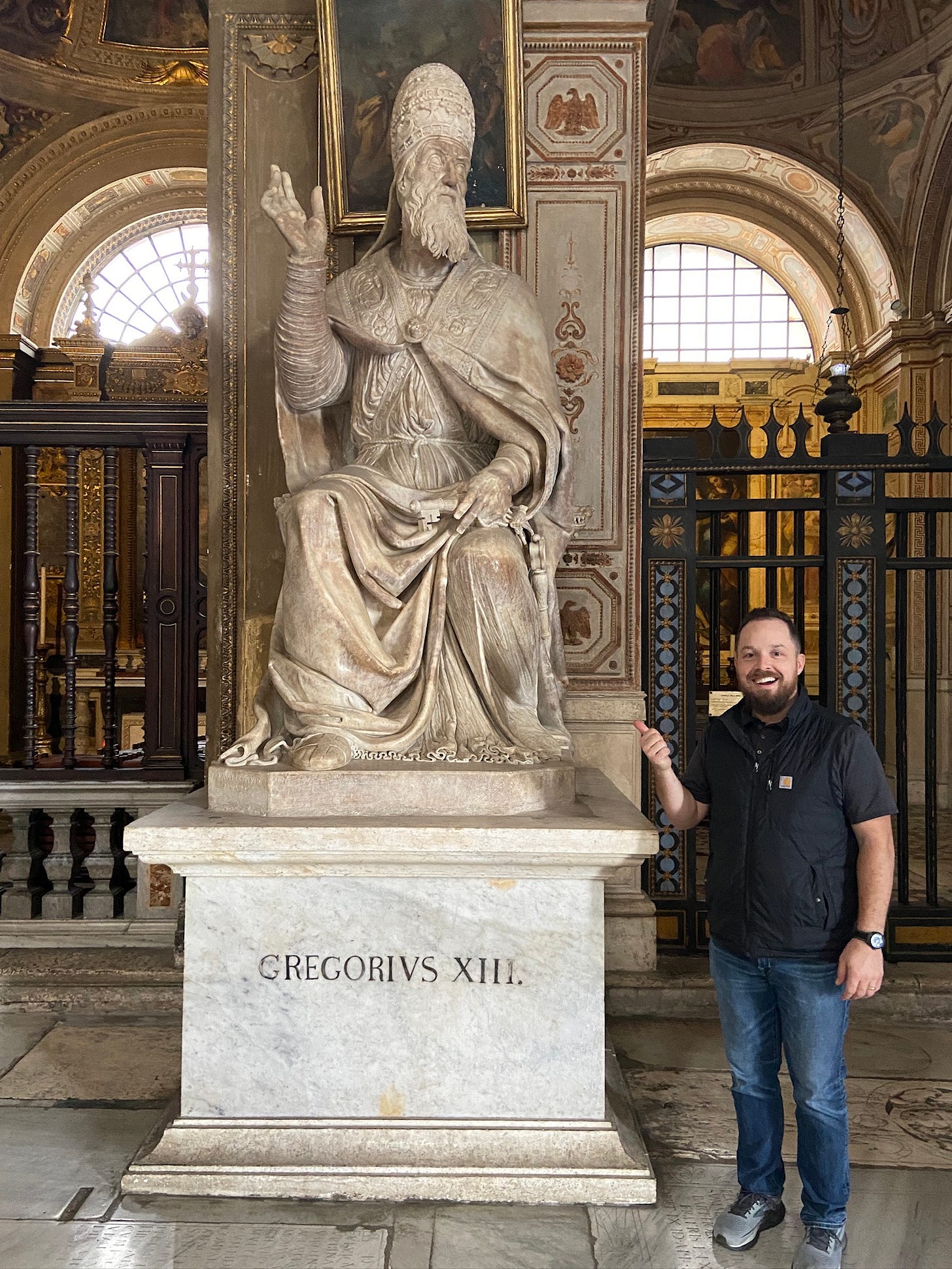
The first thing that struck me was the sheer majesty of Roman architecture – more specifically the intricacy of its churches. Readers of Today in Papal History, the original Popes in a Year series, and listeners of The Popecast will recall how often it’s noted that a particular pope set about restoring various Roman churches and other buildings, but I’d never gotten a full sense of the real fruit of those efforts until walking among them.
Fr. Ned has noted early and often the many places that destruction or deterioration has been repaired either back to its original splendor or to something even greater, and each improvement is demarcated with a plaque bearing the name of the pope who oversaw it, along with the year it occurred (and usually some other inscriptions that my paltry Latin is usually unable to decipher).
The second major thing that’s struck me so far – not to be too glib or grandiose – is the stark contrast between these centuries-old edifices and the fleeting nature of human life. So much of these churches’ wall and floor space is covered with tales of death – be it in frescoes of the martyrs or actual tombs of benefactors, priests, religious men & women, bishops, and popes.
The well-known ones – usually famous saints or past pontiffs – are recognizable enough, but nearly all of them are entirely forgotten, their past successes or failures now known only to God.
It’s been a profound reminder that although earthly accomplishments matter to a degree, closeness to the Lord in this life is paramount, because St. Therese of Lisieux was right in noting that “the world is thy ship and not thy home.”
—
On a lighter note, here’s some other highlights from Day 1:
An imposing – and rather rotund – statue of Pope Leo X, the Medici who all but ushered in the Protestant Reformation through his own incompetence. I’m fairly certain the sculptor didn’t think highly of Leo.
The first papal tomb we ran across – the only one buried in S. Maria in Aracoeli – was that of Pope Honorius IV, who reigned in the 13th century and died in the year 1287. Honorius was born to Roman nobility, was the great-nephew of Pope Honorius III, was a patron of the mendicant religious orders, and was the last pope to have been married (he was reportedly widowed before entering ministry).
It’s not pope-related, but during a tour of the house where Fr. Ned resides for his studies at the Santa Croce, I found among the paintings of past rectors that of Bishop Charles White, the second Bishop of Spokane (WA) and namesake of Spokane’s college seminary:
Perhaps the coolest find of the day – a beautiful Baroque church across from Rome’s Trevi Fountain, Santi Vincenzo e Anastasio a Trevi, contains the hearts of 22 popes (because of course it does).
We weren’t able to see the hearts themselves, but on either side of the altar are plaques listing the names of each pope whose hearts reside there:
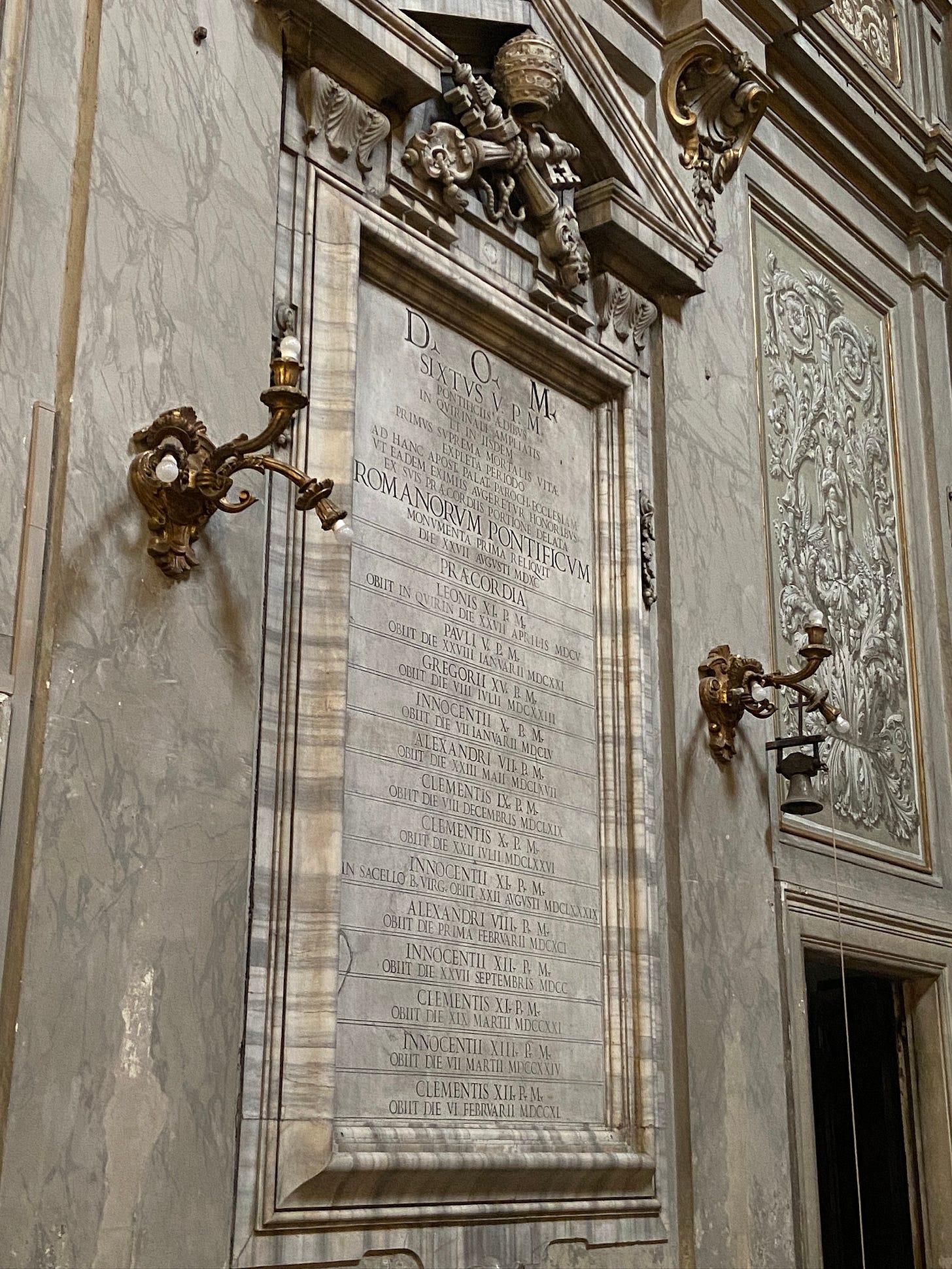
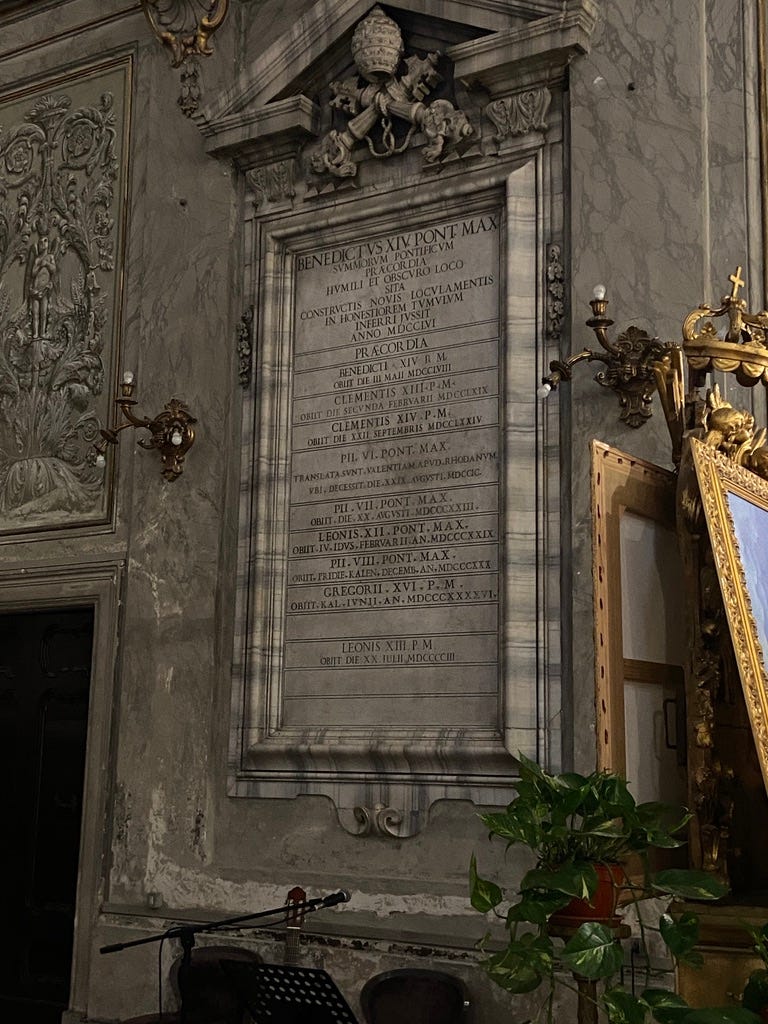
Our last stop of the day before heading off to find some Italian pasta was the Basilica Santi Apostoli, houses the relics of the Apostles St. Philip and St. James, along with the tomb of Pope Clement XIV, who was a member of the order of friars (the Conventual Franciscans) that still operate the church to this day.
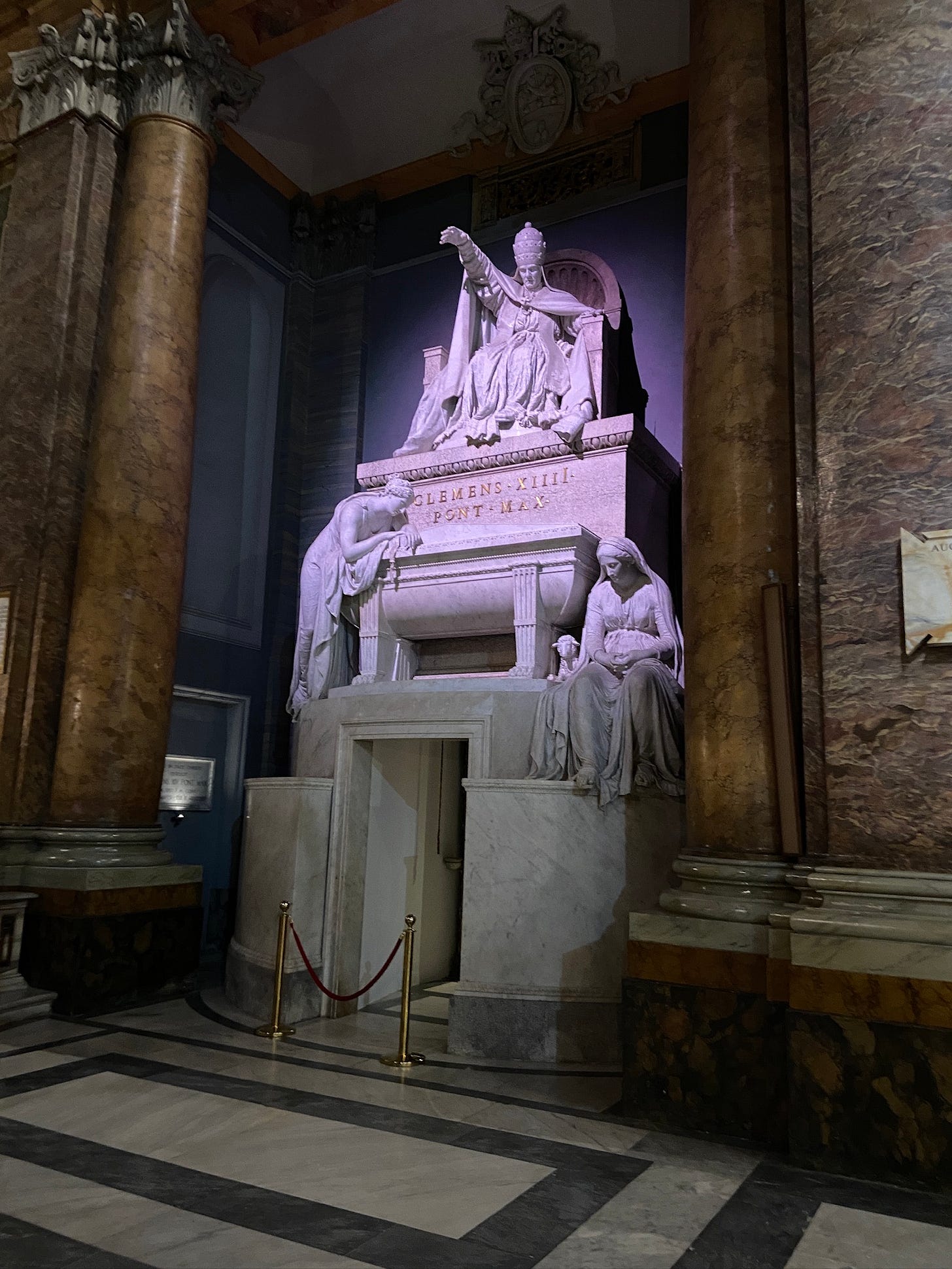
Thanks for reading. See you all tomorrow!




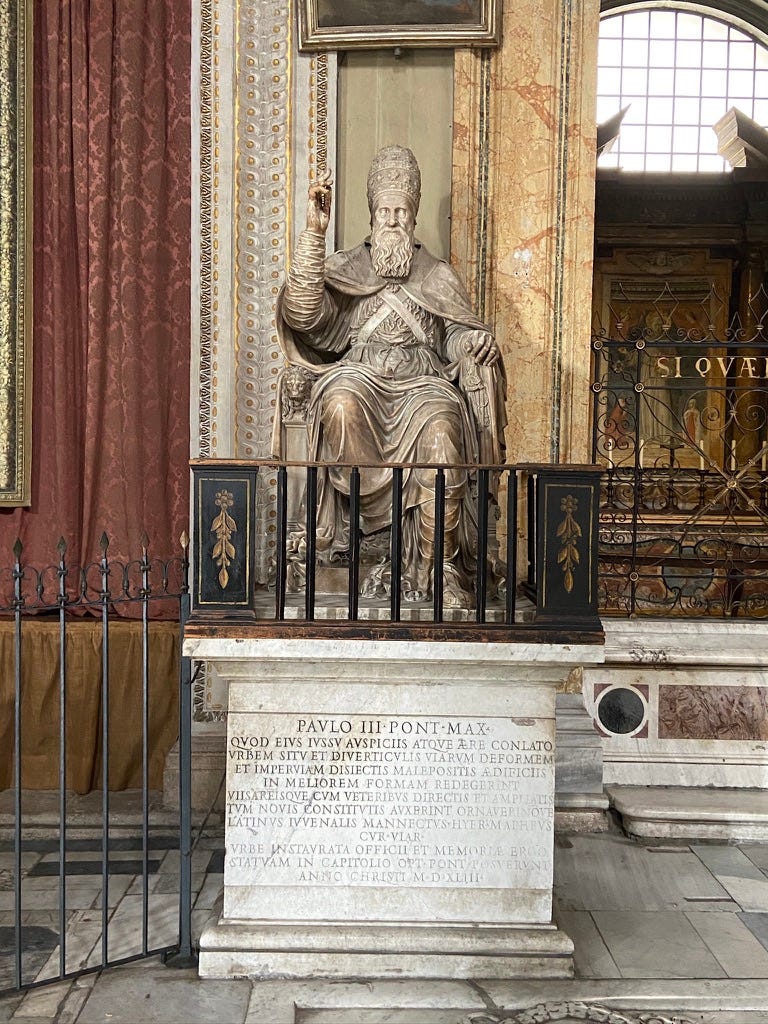
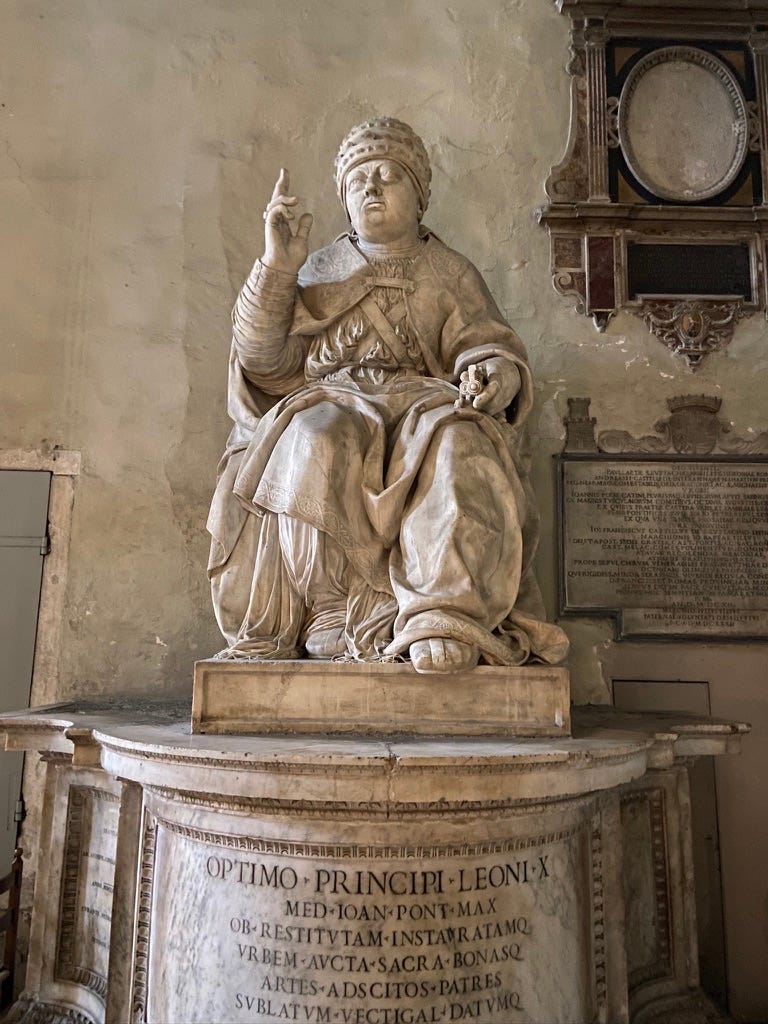
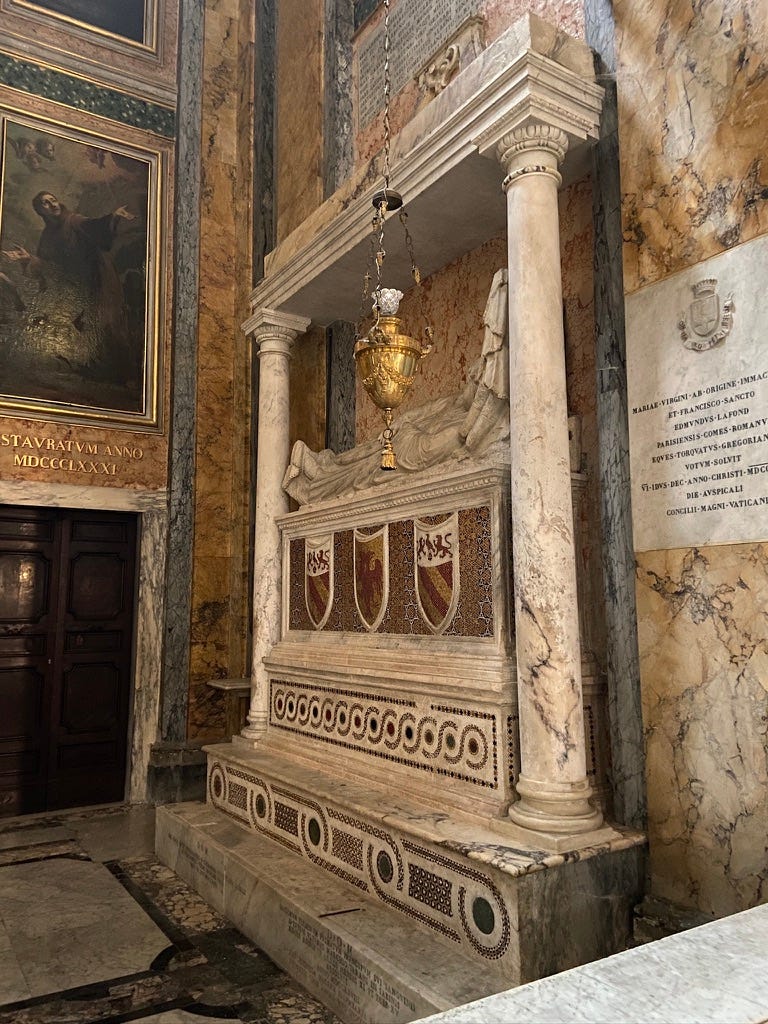
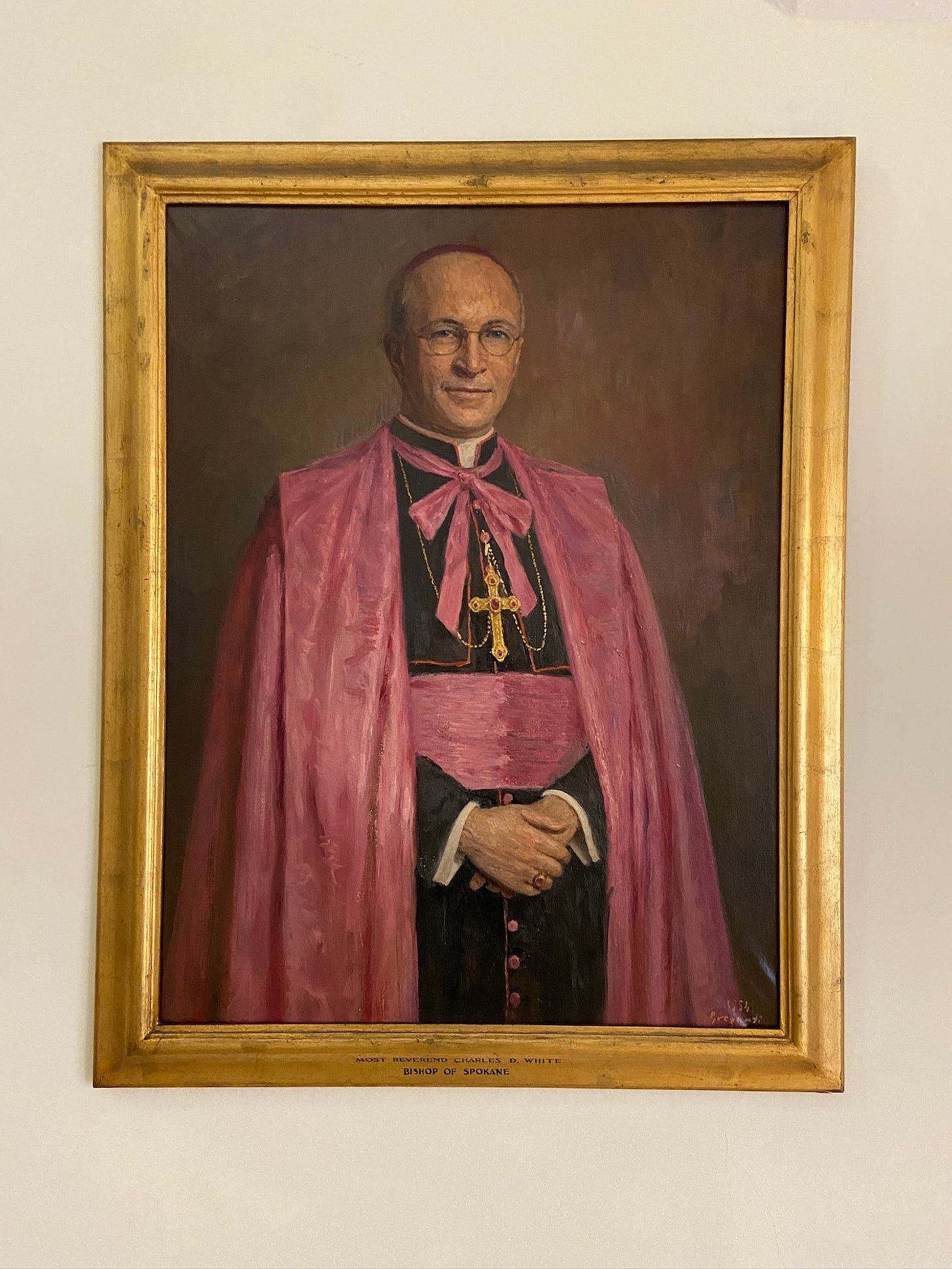
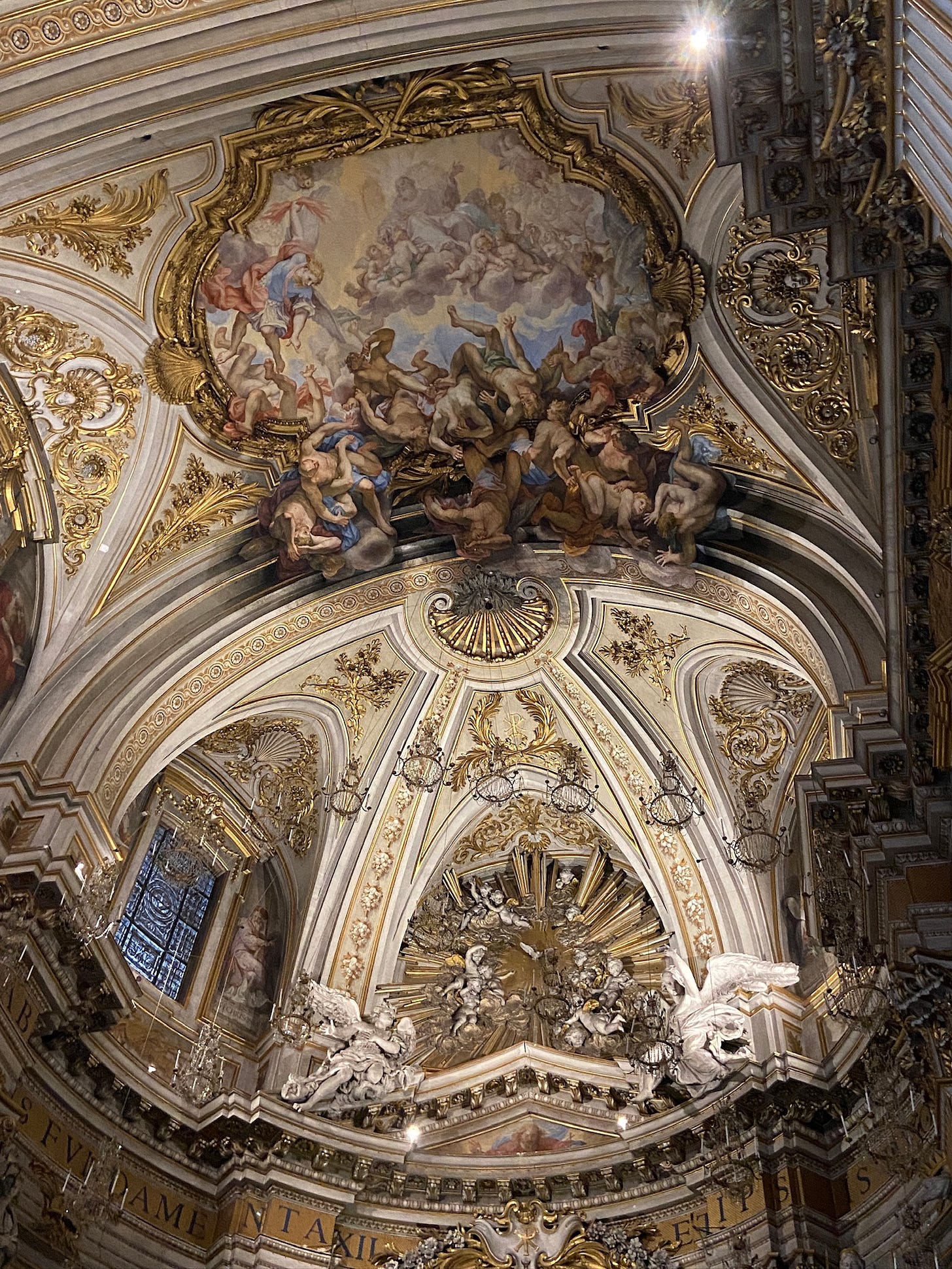
awesome! safe travels.